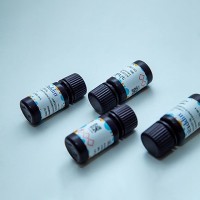Although standard reverse transcriptase-polymerase chain reaction (RT-PCR) is a remarkably sensitive technique, its sensitivity can be further increased by performing “nested” RT-PCR. This involves taking an aliquot of the product from the primary RT-PCR, and using it as a template for a secondary round of PCR amplification. To avoid further amplification of primer-dimer artifacts or nonspecific products generated in the primary PCR, a different set of primers is employed in the secondary PCR. These “nested” primers are internal to the primers used in the primary PCR, yielding a somewhat shorter amplicon (Fig. 1 ). Because their sequences are different from the primary set of primers, they will not amplify artifacts or nonspecific products generated in the primary PCR, enabling product specificity to be maintained over the high number of amplification cycles combined in the primary and secondary PCRs.

Fig. 1. Nested RT-PCR. The sensitivity of standard RT-PCR can be increased by performing a secondary, or “nested” PCR on an aliquot (usually 1%) of the products from the primary PCR. The secondary PCR uses a different set of primers, “nested” or internal to those used in the primary PCR. These primers will not find priming sites on any primer dimers or nonspecific artifacts generated in the primary PCR. Thus, the nested primers will only prime any specific product generated in the primary PCR, thus helping to maintain PCR specificity through the large number of cycles of the combined primary and secondary PCRs. Reprinted with permission from ref. (16 ).








